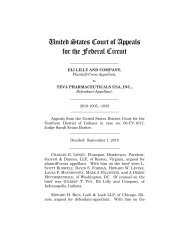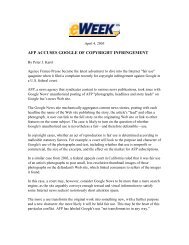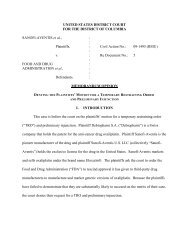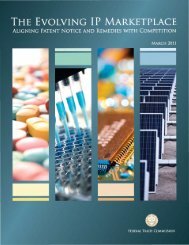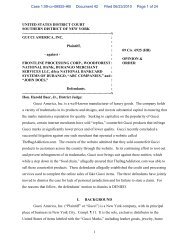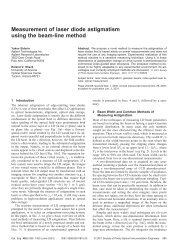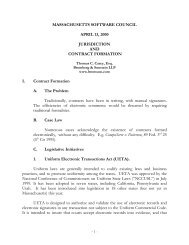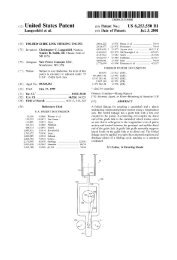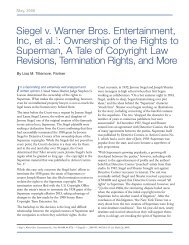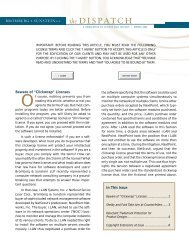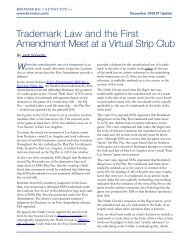Bard Peripheral Vascular, Inc. v. WL Gore
Bard Peripheral Vascular, Inc. v. WL Gore
Bard Peripheral Vascular, Inc. v. WL Gore
You also want an ePaper? Increase the reach of your titles
YUMPU automatically turns print PDFs into web optimized ePapers that Google loves.
BARD PERIPHERAL v. <strong>WL</strong> GORE 6course of his work, Cooper discovered that materialfrom ePTFE tubes with fibril lengths . . . [ofabout 5 to 100 microns] was suitable for use invascular grafts.. . .During the same period, Goldfarb was Director ofResearch and Clinical Staff Surgeon at the ArizonaHeart Institute [(“AHI”)], and was conductingresearch on artificial vascular grafts. BetweenFebruary and April of 1973, Cooper sent Goldfarba number of ePTFE tubes to use in his research.Although Cooper intended that Goldfarb use thetubes for vascular grafts, Cooper did not have anyright of control over Goldfarb’s research, andGoldfarb was not required to use the tubes suppliedby Cooper or to perform his experiments inany particular way.Goldfarb conducted a series of experiments involving21 grafts made from the tubes Cooper provided.On June 13, 1973, the graft labeled “2-73RF,” which came from Lot 459-04133-9 providedby Cooper, was determined to be a successful implantin a dog.Cooper II, 240 F.3d at 1381.B.The ’135 patent was previously the subject of an interferenceproceeding between Cooper and Goldfarb at theBoard of Patent Appeals and Interferences (“Board”),Interference No. 101,100 (“Interference”). On April 2,1974, Cooper filed Patent Application No. 05/457,711claiming the use of ePTFE as a vascular graft. Cooper I,154 F.3d at 1325. On October 24, 1974, Goldfarb filedPatent Application No. 05/517,415 also claiming the use of



